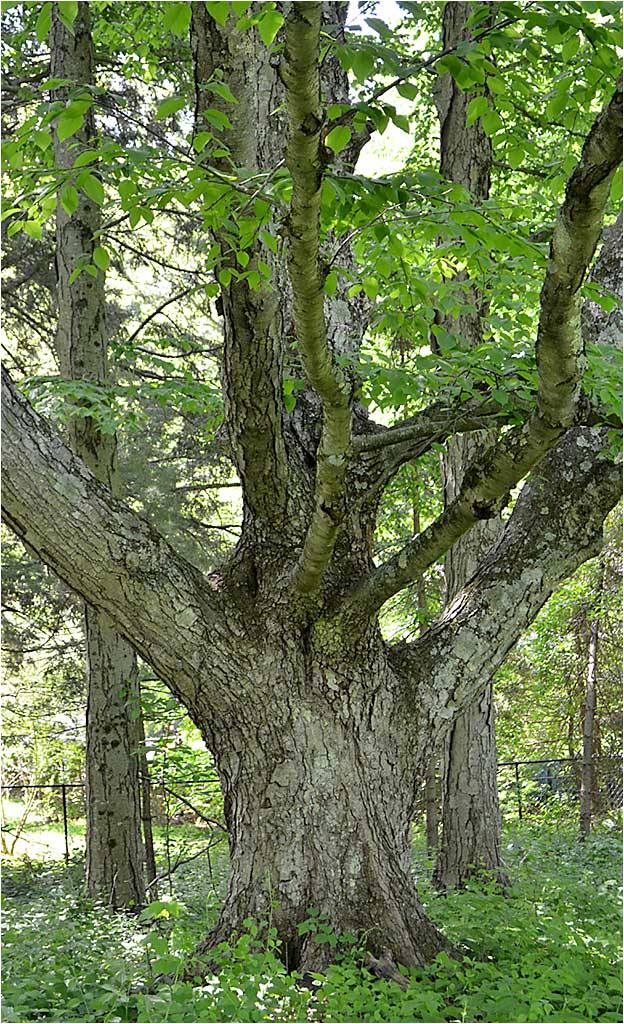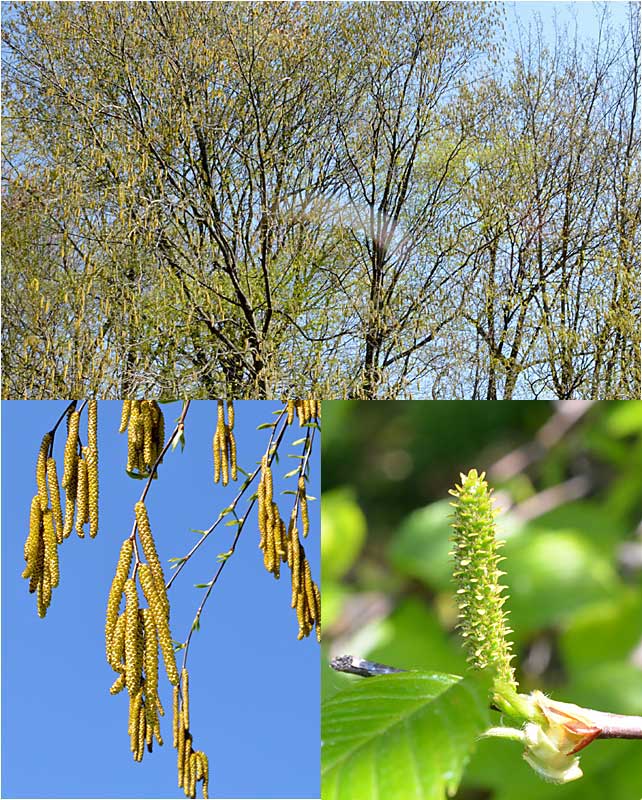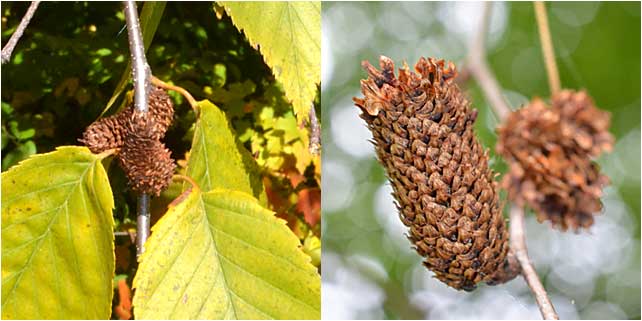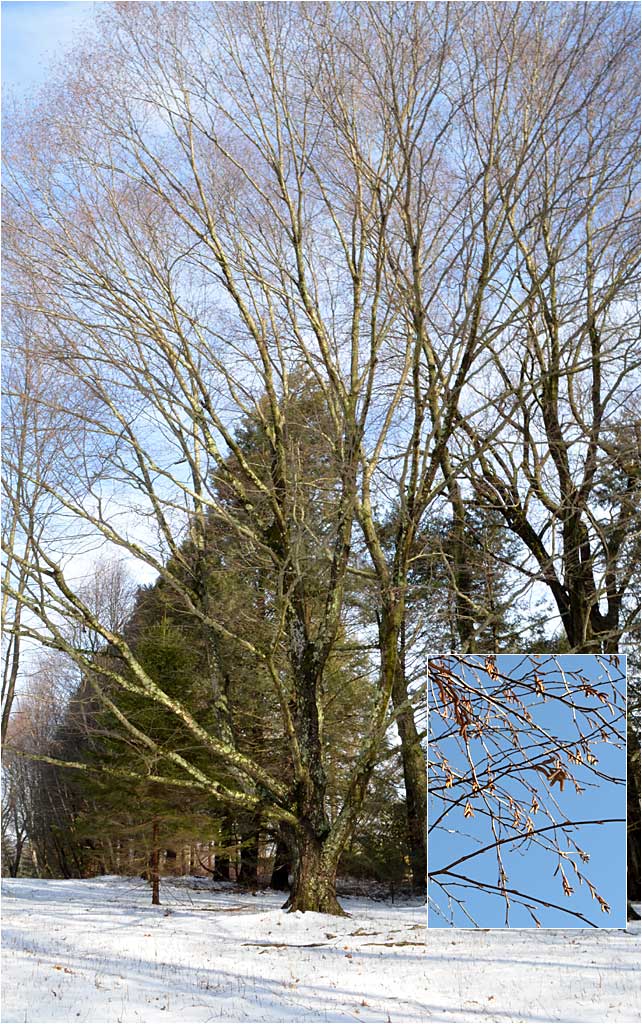48. BLACK BIRCH, Betula lenta
CT Notable Tree

There is a grand old tree at the Westmoor Arboretum (one of several) that inspires awe and reverence. It is tucked away in the south-west loop, a bit hard to find. But if you're near the Loblolly Pines, or the Persimmons, you are only yards away (MAP). This is Black Birch (aka Sweet Birch) and this species of Birch can live to be 250 years old. This one is probably 130 or so, but might be a decade younger because of the pristine conditions it has lived in.
SPRING, MALE & FEMALE CATKINS

In Spring the trees come alive with the light colors or emerging leaves, male catkins (left) and female catkins (right). The female catkins are quite small at this point while the male catkins seem to be everywhere on the tree. The species is monecious (M/F flowers on same tree).
SUMMER

The bark of young Black Birch is smooth with lots of horizontal lenticels. On mature trees such as this one, the bark is heavily plated. Due to its size and age, this Black Birch is a CT Notable Tree and one of eleven Notable Trees in the Westmoor Arboretum.
SUMMER CLOSE-UPS

Summer displays a dense, very large tree canopy, and the habit of the tree is typical of "field" grown trees. This Birch might have been an original pasture tree, or just had enough space to expand its canopy horizontally instead of vertically. The canopy is very wide. The male catkins are depleted (left) but still on the tree, and the female catkins (now fertilized) are growing. They are still quite small, perhaps 1/2 the length of your thumb.
CATKINS & NUTLETS

You may see brown catkins on the tree during any season as they stay on the tree for various periods of time. These are the very mature female catkins and are composed of thousands of tiny nutlets. The nutlets are dispersed by wind.
FALL

This Birch has wonderful fall color, peaking in the end of October in 2022. The contrast of the light foliage with the old trunk and branches is quite a treat. More light shines through the canopy during fall - a plus as it is difficult to photograph in Summer due to shade.
CATKINS FOR NEXT YEAR

When you look closely at the branch tips in Summer, you will see very small, green male catkins growing (right). They get longer during late Summer and Fall (left) and will remain on the tree over winter. They will bloom next Spring.
WINTER

Winter scene at the Black Birch, Westmoor Arboretum. You can clearly see the entire tree, its huge canopy, and the hanging male catkins which will be its winter companions. This is a CT Notable Tree with a DBH (Diameter-at-Breast-Height) of 35 inches in 2022.